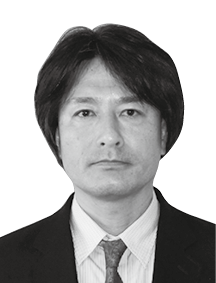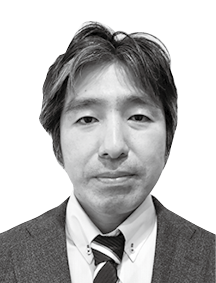Traffic management systems centered on traffic control are becoming increasingly important for the railway business. In order to further pursue quality and strengthen its ability to meet delivery deadlines, Hitachi has been standardizing and integrating its product, design, and development processes since FY2017, and in FY2019 completed the development of a standard traffic management system, the first application of which is the Kyoto City Subway Tozai Line operated by the Kyoto City Transportation Bureau. This system has a traffic status broadcast function that enables the traffic status of trains to be accurately determined from dedicated terminals even at distant locations like train offices far from the central control room, and a remote monitoring function that works through a cloud data center. These functions allow the system to rapidly detect faults in key central processing units and other equipment interface devices. In the future, through expansion of componentization, support for automatic operation, greater efficiency in operation adjustment using AI, and reduction of hardware through use of the IoT and the cloud, the company intends to raise the value of the products it provides through their superior ability to solve the issues facing its customers.




As the importance of railways grows within the transportation sector overall, the significance of traffic management systems centered on traffic control is becoming increasingly clear. In order to further pursue quality and strengthen its ability to meet delivery deadlines, Hitachi began standardizing and integrating its product, design, and development processes since FY2017, and in FY2019 completed the development of a standard traffic management system. This standard traffic management system implements software to use the results of analysis of functional specifications of delivered systems to identify standard functional specifications that do not depend on customer operations or line configurations, and componentizing areas that are dependent on such. This allows it to maintain a higher level of quality while coping with short deadlines.
This article describes the first application of the standard traffic management system on the Kyoto City Subway Tozai Line that Hitachi delivered to the Kyoto City Transportation Bureau. It also talks about the future prospects for this system, and about the traffic status broadcast function and remote monitoring function via cloud data centers.
Currently, Hitachi has delivered traffic management systems for public-sector railway operators to 30 companies operating on 50 lines nationwide.
When starting to design upgraded systems, Hitachi decided on the base system first, then worked on incorporating additional or enhanced functions and updated hardware in the existing systems. Yet this development process resulted in many systems that were at once similar and yet different because new specifications and architectures were designed that were not directly related to each system’s operations or line configurations, and the design elements that the company already had past experience with were redesigned. This led to long discussions with customers over specifications and complications with quality control and operation and maintenance.
Hitachi developed the new standard traffic management system to solve these problems. The core concepts in this development were (1) to identify components that do not depend on customer operations or line configuration and do not require changes for each project (standard components) and the software to implement and continue to refine such standard components; (2) to componentize elements that need to be changed for each project but have areas that can be selected from previous projects (optional components) to eventually build up a library of such optional components.
In this instance, Hitachi completed development of standard software to accomplish (1) for standard functional specifications and standard internal interfaces (interfaces between devices constituting the traffic management system). These were then applied for the first time to a project to upgrade the traffic management system of the Kyoto City Subway Tozai Line operated by the Kyoto City Transportation Bureau.
The Kyoto City Subway Tozai Line operated by the Kyoto City Transportation Bureau is a 17.5-kilometer subway line connecting 17 stations, from Rokujizo to Uzumasa Tenjingawa. One feature of the line is that it controls the link-up to the Keihan-Keishin Line operated by Keihan Electric Railway Co., Ltd. at Misasagi Station (see Figure 1). More than twenty years have passed since the traffic management system was introduced with the opening of the Tozai Line in October 1997. As its hardware has deteriorated over time, Hitachi undertook to design and develop a new system to improve the efficiency of train control operations, provide better services to passengers, smoother train traffic management, and better serviceability, according to the customer’s needs. The new system went into operation in February 2020.
Fig. 1—Route Map of the Tozai Line of Kyoto City Subway
 The Tozai Line (Kyoto) runs for 17.5 kilometers in Kyoto City, connecting 17 stations, from Rokujizo to Uzumasa Tenjingawa. One feature of the line is that it controls a link-up to other lines at Misasagi Station.
The Tozai Line (Kyoto) runs for 17.5 kilometers in Kyoto City, connecting 17 stations, from Rokujizo to Uzumasa Tenjingawa. One feature of the line is that it controls a link-up to other lines at Misasagi Station.
Figure 2 shows the configuration of the traffic management system for the Tozai Line (Kyoto). The old system was an autonomous decentralized one where devices at each station independently controlled the timetable (operation plan) and implemented the control logic operations. The new system aimed to integrate controls to improve mathematical operation and communications performance, as well as improve serviceability through equipment consolidation. It adopted a centralized system where the redundant central processing units were integrated to implement the control logic operations. Backup functions to enable train-number indication and manual route setting if both central processing units shut down were also implemented on interface devices for other equipment, further reducing the number of machines to be delivered. Multiple traffic management consoles to manage train control operations were installed for redundancy, while greater visibility was obtained by using a dual display.
Fig. 2—System Configuration of the Tozai Line of Kyoto City Subway
 The aim was to integrate controls to improve mathematical operation and communications performance, as well as improve serviceability by equipment consolidation. A centralized system was adopted where the redundant central processing units were integrated to implement the control logic operations.
The aim was to integrate controls to improve mathematical operation and communications performance, as well as improve serviceability by equipment consolidation. A centralized system was adopted where the redundant central processing units were integrated to implement the control logic operations.
For standard components that did not depend on customer operations, Hitachi compared the functional specifications of the 30 systems it has developed so far, then used those results to identify standard specifications and non-standard specifications and prepared a standard functional specifications sheet detailing those specifications. For the Tozai Line’s functional specifications, the standard specifications could be used for standard components, ensuring quality in determining the specifications.
The human machine interface (HMI) function was not considered for standardization as it is substantially affected by customer operations. However, out of a desire to improve product value with better operability and visibility, Hitachi created an implementation function matrix for the 30 existing systems to identify standard HMI function items. After comparing the respective input and input content check specifications for the standard HMI functions for the 30 systems, Hitachi summarized the results in a standard HMI function specifications sheet for use. The manual route setting HMI function, for example, was performed on a console manufactured by another company on the old system, but the standard HMI functions proposed and implemented here have greatly increased the efficiency of control operations by standardizing actions with other functions, receiving much recognition.
Because the functional specifications are different in each project, normally the internal interfaces would have to be changed each time. However, because the company had decided on standard functional specifications, Hitachi was able to prepare preconditions to determine the standard internal interfaces. Looking toward future projects to further incorporate standardization, it decided on standard internal interface specifications under the concept of establishing (1) internal interfaces that do not require program changes when optional specifications are altered, and (2) internal interfaces that can adapt to the scale of controls in any project. The company then developed the software to achieve this, and applied it for the first time on the Tozai Line (Kyoto).
In the future, the policy will be to design and build systems for all other projects based on this standard traffic management system to achieve the following three goals.
To achieve these goals and continue to provide products with high customer satisfaction, it is essential to make the standard traffic management system itself evolve. To do this, the company will systematically pursue baseline management of the standard traffic management systems so that both the standard components and optional components are strengthened as they are applied to projects. Hitachi is also working on developing the standard traffic management systems so that they can handle integrated control of the main line and train yard, and also support communication-based train control (CBTC).
The configuration of systems related to the traffic status broadcast function is shown in Figure 3. The traffic status broadcast function enables the traffic status of trains to be accurately determined from dedicated terminals even at distant locations like train offices far from the central control room. Implementing functions of the old systems with the latest hardware enables real-time operation, while another major feature of this function is the ability to reproduce the traffic status over the last 20 days via the same HMI as the training system. Other key features are as follows.
Fig. 3—Configuration of Devices Related to the Traffic Status Broadcast Function
 Availability was secured by duplicating traffic status broadcast devices. The traffic status broadcast devices are connected via firewalls to the traffic status monitors as a measure to enhance cyber-security.
Availability was secured by duplicating traffic status broadcast devices. The traffic status broadcast devices are connected via firewalls to the traffic status monitors as a measure to enhance cyber-security.
An example of the traffic status screen is shown in Figure 4.
Fig. 4—Example of a Traffic Status Screen
 The human machine interface (HMI) of the dedicated terminals is integrated with the traffic management console and the training system. The screens that can be displayed and utilized are restricted for each dedicated terminal.
The human machine interface (HMI) of the dedicated terminals is integrated with the traffic management console and the training system. The screens that can be displayed and utilized are restricted for each dedicated terminal.
Figure 5 shows the configuration of devices related to the remote monitoring function. The remote monitoring function allows rapid fault detection for the devices that make up the traffic management system, particularly for the important central processing units and interface devices for other equipment.
Fig. 5—Configuration of Devices Related to the Remote Monitoring Function
 Three cloud data servers are installed in the cloud data center. They are accessed via firewalls with enhanced security measures.
Three cloud data servers are installed in the cloud data center. They are accessed via firewalls with enhanced security measures.
The key feature of this function is 24-hour, seven-days-a-week remote monitoring of devices by Hitachi Power Solutions Co., Ltd., the contracted maintenance company, using a cloud data center. Three cloud data servers are installed in the center. They are accessed via firewalls with enhanced security measures. Because it is a wireless system, it is comparatively easy to add more devices to be monitored outside the traffic management system, making it possible to further improve the efficiency of maintenance.
This first use of the cloud in remote monitoring for the traffic management system has further accelerated the use of the cloud in products.
This article described the standardization of traffic management systems, the first application of a standard traffic management system, and the features of the traffic status broadcast function and remote monitoring function newly developed for the traffic management system in use on the Tozai Line of Kyoto City Subway.
In the future, through initiatives such as refinement of the traffic management system, expansion of componentization, support for automatic operation, use of artificial intelligence (AI) for greater efficiency in operational adjustments, and reduction of hardware through use of the Internet of Things (IoT) and the cloud, Hitachi intends to improve the value of its products by adopting new technologies to provide attractive products to meet customers’ needs and solve their problems.